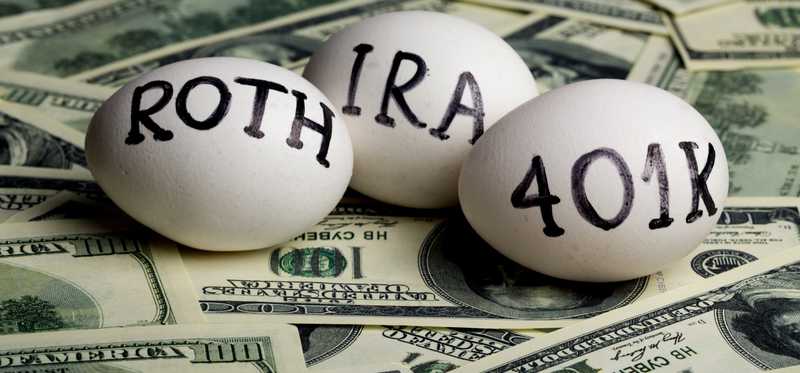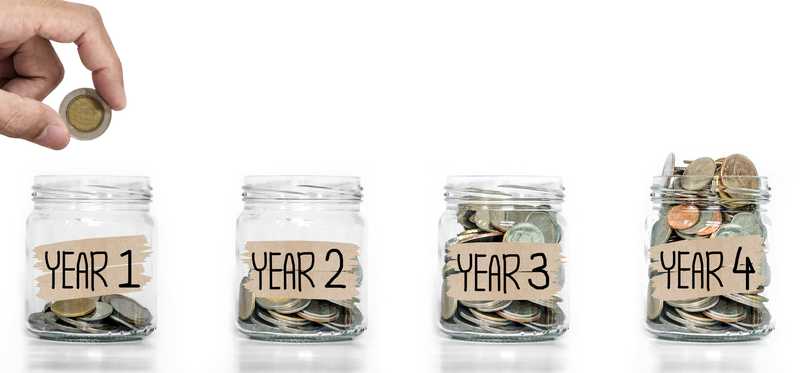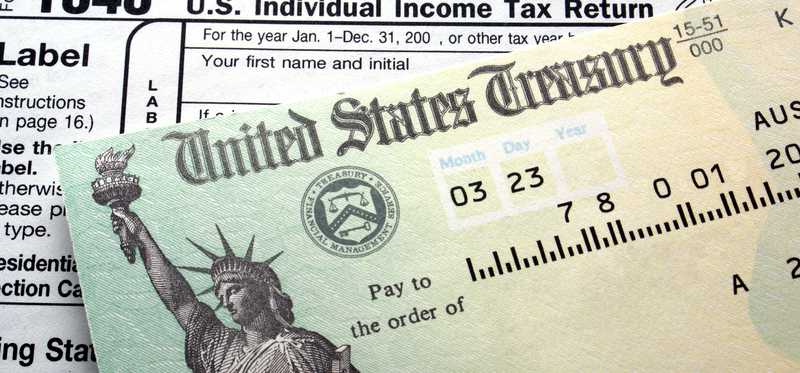50 Ways to Earn $1 Million Before You Retire

50 Ways to Earn $1 Million Before You Retire
Millionaire ahead...
A million dollars! That kind of money can provide a pretty comfortable retirement for most of us, and we shouldn't think of it as just an amusing and unattainable pipe dream. With so few people having pension income to look forward to these days, it's increasingly important for us to provide for ourselves.
Here are lots of steps you can take toward building a retirement war chest of a million dollars (or a little more or less). Some of them you'll want to act on soon.
Previous
Next

No. 1: Have an emergency fund first
Let's start with an emergency fund, because if you haven't got six to nine months' worth of living expenses accessible to you, you shouldn't be thinking of making long-term investments in stocks or elsewhere. Financial trouble can strike any of us any time, in the form of a job loss or health setback or sudden costly car repair. You need to be able to handle such events, so get an emergency fund in place pronto.
Previous
Next

No. 2: Get out of debt before saving and investing
Next, don't think about saving and investing and watching your money grow until you've paid off all high-interest-rate debt such as that from credit cards. (It can be nice to be free of mortgage debt, too, but that's far less problematic, and if your mortgage interest rate is low, it can be fine to keep paying that off while investing excess funds in places such as stocks, where you expect to earn a higher return. So get out of debt -- at least any debt with high interest rates.
Previous
Next

No. 3: Forget about lottery tickets
Sorry, but winning a lottery can seem like the easiest way to get a million dollars or more for retirement, but the odds are far worse than you might appreciate. The odds for winning the Powerball jackpot, for example, are 1 in 292,201,338 -- rather remote. To win merely a million dollars, the odds are still terrible: 1 in 11,688,053, meaning that you're pretty much going to be flushing any dollars spent on lottery tickets down the toilet. It's fine to buy a ticket or two here and there, but don't spend a lot hoping to win big. That's a loser's game.
Previous
Next

No. 4: Steer clear of get-rich-quick schemes
It's also smart to beware of get-rich-quick ideas that you run across or come up with. These can include day-trading, market-timing, speculating in commodities, currency-exchange trading, or buying penny stocks that someone is hyping online, perhaps suggesting that the company is about to discover gold or oil or cure cancer. Think of all the rich people you know -- they probably got wealthy by steadily investing over many years, starting a good business, or progressing in a lucrative career, not via get-rich-quick schemes.
Previous
Next

No. 5: Think about when you want to retire
Now think about when you want to retire, as that will matter when you're saving and investing. If you're planning to retire in three years, for instance, you'll want to keep any money you'll need within the first few years of retirement out of stocks, as the market can drop at any time and can take a few years to recover. (If you're only three years from retirement, you may not be able to save $1 million, but you can still improve your financial condition.)
ALSO READ: What Is Full Retirement Age and Why Does It Matter?
Previous
Next

No. 6: Determine how much you need to retire with
Spend some time figuring out how much money you'll need to retire with. That's easier said than done, but it's important. You'll want to estimate how much income you'll need by adding up all your expected expenses in retirement, such as food, housing, taxes, utilities, insurance, transportation, entertainment, healthcare, and more.
Once you have the income you want, you can multiply it by 25 to arrive at your needed nest egg. Want $40,000 in income? Aim for a nest egg of $1 million. (Use 25 if you're applying the flawed-but-still-helpful 4% rule, which suggests you can withdraw 4% of your nest egg in the first year of retirement and then adjust for inflation in subsequent years. If you want to be more conservative and just withdraw 3.5%, you'd multiply by 29; if you plan to withdraw 5%, you'd multiply by 20. Just divide 100 by your expected withdrawal rate.)
Previous
Next

No. 7: Factor healthcare expenses into your plan
When you factor healthcare expenses into your retirement planning, don't just go by assumptions in your head, because healthcare will probably cost more than you think -- much more. One estimate from Fidelity, suggests that a 65-year-old couple retiring today will spend $285,000 out of pocket on healthcare, and that doesn't even include long-term care. Another estimate, from HealthView Services, suggests that the average healthy 65-year-old couple retiring in 2019 will spend $387,644 on healthcare in retirement -- on Medicare, supplemental insurance policies, and other out-of-pocket costs. You can aim to keep your costs down by getting and staying healthy, and by making smart Medicare decisions.
Previous
Next

No. 8: Learn what you can expect from Social Security
Remember coming up with your desired income in retirement? Well, here's some good news -- you can reduce it by the amount you expect to receive in Social Security benefits. If you wanted $40,000 per year and you expect $20,000 from Social Security, you can save much less. The average monthly Social Security retirement benefit check was recently $1,478, or about $17,700 per year. To find out just what you might expect, visit the Social Security Administration (SSA) website and set up a my Social Security account. Once you do so, you'll be able to click in any time to see the SSA's records of your earnings over the years, along with its estimates of what your benefits will be. Be sure to correct any errors you spot in there. Also, understand that Social Security rules and payouts might change in the future, so plan conservatively. If you expect to collect $25,000 from Social Security, you might play it safe and only assume that you'll get $15,000 or $20,000. If you end up with the full $25,000, that can be gravy.
Previous
Next

No. 9: Learn how to maximize Social Security income
Next, know that if you don't like what you see in your estimated Social Security income, you have some control over the matter. There are several ways to increase your Social Security benefits, such as delaying when you start collecting. If, like many people, your full retirement age is 67, and you delay starting to collect benefits until age 70, your benefit checks will grow about 8% bigger for each of those three years, meaning you'll get about 24% more. (It can still make sense to start collecting early, though, as many people do -- after all, you'll collect more checks, even though they're smaller.)
Previous
Next

No. 10: Get an idea of how money grows over time
As you prepare to save and invest in order to accumulate $1 million (or whatever sum you're aiming for), it's helpful to understand how money can grow over time. Check out this table, that reflects annual investments growing at an average rate of 8%. It clearly shows the power of being disciplined in your savings over time.
ALSO READ: Compound Interest and Compounding Growth: A Comprehensive Guide
Previous
Next

No. 11: Figure out how much you need to save each month
Once you know how much you want to amass, you'll need to break it down into shorter-term savings goals, such as how much you need to save each month. Consider using an online calculator to help you figure out how much you can amass by saving various amounts each month or year. (You can insert your expected growth rate for stock investments in the interest-rate slot.) A little trial and error experimentation with a calculator will help you see what's possible and what you need to do.
Previous
Next

No. 12: Identify ways you can spend less
Odds are, you'll be needing to save and invest a lot, regularly. To succeed, you'll likely need to spend less, save more, and perhaps bring in more income too. There are lots of ways to spend less, such as taking a time-out for a few days before impulsively making any big purchase, brown-bagging some or all of your lunches, and buying in bulk at warehouse stores.
Previous
Next

No. 13: Identify ways you can save more
Come up with as many ways to save more money as you can -- such as calling your credit card companies and asking for a lower interest rate and for your annual fee to be waived, and calling around to various insurers shopping for the best deal on your home insurance, car insurance, and more. (You'll often get discounts by having several policies with the same company.) You might cut the cable cord and just stream your entertainment via one or a few services. You might also find and use the best credit cards for your needs -- some, for example, will give you 5% back at your favorite retailer or 2% back on all purchases.
Previous
Next

No. 14: Get on the same page as your spouse
If you're married, or are sharing finances with anyone, it's critical to be on the same page. If one of you is scrimping and saving while the other is running up charges you can't afford on credit cards, you're not going to be achieving your financial goals anytime soon. Have honest discussions about your financial condition, goals, and plans. Work together to reach your goals, and check on your progress throughout the year.
Previous
Next

No. 15: Use a budget
The thought of budgeting might generate a yawn, but budgeting is a powerful way to get control of your money and set yourself up to reach your financial goals. It forces you to take a close look at just where your income is going, allowing you to see where you might make some changes. Start by tracking all your spending for a few months, and factor in annual expenses, too. For example, you might find that you spend around $300 at the supermarket each month, and if your home insurance is costing you $1,800 per year, you'd record that as $150 per month. You'll get great data in your credit card statements and perhaps your bank statements, too, but don't ignore cash spending. You might carry a small notebook with you for a few months, jotting down cash purchases in it.
Previous
Next

No. 16: Live below your means
From a purely mathematical viewpoint, you'll never build wealth without living below your means: You need to have less money going out than comes in. So with the help of a budget, know how much is coming in and aim to spend significantly less than that to permit aggressive saving and investing. Clip coupons online and from grocery circulars. Buy items when they go on sale. Don't trade in your car for a newer one every few years. Don't remodel your kitchen if you will have to go into debt to do so. If your closet is full of clothes that will serve you well, don't hit the malls every week or two, looking for more.
Previous
Next

No. 17: Live way below your means
For even better results when saving and investing, live way below your means. This will allow you to amass even more savings and reach your goals even faster.
Don't just put off replacing your car -- see if you can get rid of it altogether, sharing one vehicle with your spouse and/or using public transportation or biking. Consider renting out space in your home on a short- or long-term basis. Don't buy much meat anymore, cooking most meals at home and with inexpensive ingredients. Layer up with sweaters in the winter and keep the thermostat set at a chilly level. Downsize your home so that you're spending far less on housing and related costs. Sock away 30% or 40% or even 50% of your income.
Previous
Next

No. 18: Learn about traditional vs. Roth retirement accounts
The two top kinds of retirement accounts are IRAs and 401(k)s. Each comes in two main varieties: traditional and Roth. With a traditional IRA or 401(k), you contribute money on a pre-tax basis, with that amount avoiding the tax man. A contribution of, say, $5,000 will shrink your taxable income by $5,000 in the year of contribution. You'll only be taxed when you ultimately withdraw from that account, and at that time the withdrawals will count as taxable income.
With a Roth IRA or 401(k), you contribute money on a post-tax basis, getting no upfront tax break. But play by the rules and in retirement you'll be able to take money out of those accounts tax-free. That can be a big deal if the account has grown to be worth a lot. Learn more about whether traditional or Roth accounts will serve you best -- you might even have one or two of each!
Previous
Next

No. 19: Open and use an IRA (or two)
An IRA is a retirement account and is designed to help you save money for your future. So make use of it. For the year 2020, you can contribute a total of up to $6,000 to one or more IRA accounts, plus an additional $1,000 if you're 50 or older. That's unchanged from 2019 contribution limits -- and note: It may not be too late to make a 2019 contribution to your IRA(s), as that deadline is the same as your tax return's deadline -- April 15, 2020. (You have until April 15, 2021, to make a 2020 contribution.)
Previous
Next

No. 20: Participate in your employer's 401(k)
Participating in the 401(k) account available to you at work is also a smart move, and a 401(k) can get fatter faster, because the contribution limits are much higher. For 2020, you can sock away up to $19,500 in a 401(k), plus an additional $6,500 (for a grand total of $26,000) if you're 50 or older. That's up from 2019 limits of $19,000 and $6,000 (grand total: $25,000). The deadline for contributing to your 401(k) is the end of the calendar year, or Dec. 31.
Previous
Next

No. 21: Research that 401(k)
Before you go all in on your 401(k) account, take some time to learn about it, because all 401(k) plans are not equally good. At BrightScope.com, for example, you can look up the 401(k) account profile for many companies, and can see how yours rates and compares with others. For example, Apple's (Nasdaq: AAPL) 401(k) plan gets an overall score of 81 from BrightScope, with 100 being the highest possible score and 89 being the highest in the company's peer group. Looking deeper, its total plan costs are among the lowest, and company generosity above average. Salary deferral amounts are "Great." If your company's plan isn't great, consider contributing only enough to grab all available matching dollars and then focusing your saving and investing elsewhere, such as in IRA accounts and/or regular brokerage accounts. Let your company's benefits department know you're disappointed too.
Previous
Next

No. 22: Don't make common 401(k) mistakes
Once you're participating in a 401(k) plan, steer clear of costly 401(k) mistakes. These include not contributing very much, leaving your money in too-conservative default investments, and cashing out your account when you change jobs.
Previous
Next

No. 23: Set up another savings account if you're self-employed
Don't think you're out of luck in the tax-advantaged retirement-plan department if you're self-employed, because there are options for you too. For example, you might save with a SEP IRA, which has an even more generous contribution limit than a 401(k). For 2020, you can contribute up to 25% of your net income, to a maximum of $57,000. (For 2019, that limit was $56,000.) The calculation to determine exactly what your cap is can be a little tricky, so you might want to use tax-prep software or a tax professional's services for that. You can set up a SEP IRA at most major brokerages.
Two more options are the SIMPLE IRA and SIMPLE 401(k), each of which sports a 2020 contribution limit of $13,500, plus an additional $3,000 for those 50 and older.
Previous
Next

No. 24: Get savvy about fees
As you save and invest, pay attention to the fees you're being charged. Consider, for example, that a typical actively managed stock mutual fund may charge you 1% to even 1.5% or more annually, via its "expense ratio," while a passively managed index fund often charges 0.20% or less -- and is very likely to outperform the fancier managed fund. Those seemingly small differences can add up to thousands of dollars lost. Imagine, for example, investing $5,000 each year for 25 years, and earning 7% annually or 8% annually. The lower growth rate would get you to about $338,000, while the higher rate would leave you with more than $394,000. That's a difference of more than $56,000 just from a single percentage-point difference.
Look for fees all over your financial life, and you'll find them. Aim to keep them low by looking for lower-fee alternatives. Even your bank, for example, might be charging you $35 in overdraft fees, along with monthly service or maintenance fees, and even inactivity fees.
Previous
Next

No. 25: Increase your investments over time
Next, aim to be upping the amount you invest over time. If you're socking away 7% of your income this year, plan to sock away 8% next year, and 9% the year after. You may not be able to do this every year, but the more you can save and invest in your earliest years, the better off you'll likely be, because those dollars will have the longest time in which to grow.
ALSO READ: Study: This Easy Move Could Boost Your Retirement Savings by $85,500
Previous
Next

No. 26: Invest that raise
One great trick for saving money is to save and invest any raises you get. If you're earning, say, $65,000 annually and you get a 4% raise, which means $2,600 more, send that extra money directly into your investment account. You've already been living on that $65,000 and will probably not feel too much pain without that extra $2,600. If that small sum can remain invested for, say, 15 years, and it averages 8% annual growth, it can end up worth more than $8,000!
Previous
Next

No. 27: Invest your tax refunds too
As with raises, aim to bank your tax refunds as well. Send that refund check directly into a retirement account. The average tax refund has been around $2,700 in recent years, with many people collecting a lot more. Ideally, you should set your withholding so that you end up with the smallest refund possible -- because that refund is simply a return of your own money that you overpaid to Uncle Sam -- not a true windfall. But for those who have trouble saving, setting your withholdings so that you get big refunds each year is a somewhat inefficient but still powerful way to end up with a pile of extra money to sock away.
Previous
Next

No. 28: Earn more at work
As you aim for a million dollars at retirement, it may be clear that you will have to be aggressive about saving. One great strategy, if you can pull it off, is to earn more. How? Well, maybe you can take some courses and get a professional certificate or designation that will qualify you for a raise -- or a job elsewhere that pays more. You might consider switching into an entirely different field of work, if you can find something appealing and more lucrative. Even if you stay in your current field, know that studies show that people who switch jobs every few years end up earning more, overall, than those who stay with the same employer.
According to a report in Forbes, "Staying employed at the same company for over two years on average is going to make you earn less over your lifetime by about 50% or more." The folks at human resource management company Automatic Data Processing (Nasdaq: ADP) studied data related to some 24 million workers and found that workers get the biggest increases in their salary when they've been at their job for at least two years but not more than five years.
Previous
Next

No. 29: Be house-smart
Being house-smart can also help you on your way to a million dollars. That means not owning more home than you can afford to pay for and maintain while also reaching your financial goals. After all, our homes often consume the biggest portion of our paychecks, and the less you pay for housing, the more you can save and invest.
You may want to downsize to a less costly home, perhaps in a less costly place to live. Or at least take a close look at your home loan to see whether it makes sense to refinance your mortgage.
Previous
Next

No. 30: Be tax-smart
There are lots of smart tax-related moves you can make to shrink your tax bill. For example, you might make use of a flexible spending account (FSA) or health savings account (HSA), so that you can pay for qualifying healthcare expenses with pre-tax dollars. You might offset your capital gains with capital losses. And you might grab all the deductions and credits that you can. There are lots of them, relating to all kinds of things, such as adopting a child, making an energy-efficient home improvement, paying for education, and more.
Previous
Next

No. 31: Insure yourself
No one enjoys paying for insurance, and if years go by without your filing any claims, it can seem like you've been paying for nothing. But that's wrong -- you've been paying all along for protection, and you've been protected -- against financial expenses and even financial calamities. Be sure that you're carrying enough of all the kinds of insurance you need, lest you end up having to pay a lot out of pocket to rebuild your home or buy a replacement car or to get a needed surgery -- such a situation can derail your efforts to build your nest egg.
Previous
Next

No. 32: Get and keep a high credit score
Many of us give little thought to our credit score, but that's an error, because having a high credit score can help you throughout your financial life, especially whenever you need to borrow money. Those with the highest scores get offered the best interest rates. High scores can also help you qualify for the best credit cards out there, with great perks. Even potential landlords are interested in your credit history, and would like to check it. You do have to authorize that, and you can refuse, but a strong record and score would work to your benefit.
Previous
Next

No. 33: Look into collecting some passive income
A lot of saving and investing involves effort and sacrifice. You may have to pass on some concerts you'd like to attend, delay buying a new car, or work some extra shifts. There's another way to get more money, though, which requires little to no effort -- passive income. Some ways of generating passive income include collecting interest or dividends, having tenants in rental properties, and even getting a reverse mortgage.
Previous
Next

No. 34: Consider a side gig or two
Having a part-time job or a little gig on the side is a great way to turbocharge your savings and investing, and there are more ways to make money on the side than you can probably imagine. For example, you might babysit or pet-sit, make and sell crafts online or at local fairs, tutor kids, be a handy person or personal trainer, drive for a ride-sharing service, or do freelance writing, editing, or design.
Previous
Next

No. 35: Start a great business
Here's a way to make a million dollars -- or possibly many millions -- that will require a lot of work and perhaps some luck: Start a great business. Remember that many huge companies today started as ideas in someone's head -- someone who put thoughts into action in a garage or shed and who was patient and diligent. Apple, Google, Amazon.com, and even Walt Disney are some such companies. Think about what ideas you have that could become profitable businesses. You needn't even launch a multi-billion-dollar enterprise in order to become sufficiently wealthy.
Previous
Next

No. 36: Profit from real estate
Real estate is another arena where you might generate wealth, and there are multiple ways to go about it. Most easily, you could invest in Real Estate Investment Trusts (REITs), which are stock-like businesses that own and lease properties and pay out most of their income in dividends to shareholders. A more difficult route is owning rental property. It can be quite lucrative, but remember that you'll have to pay for taxes and insurance and maintenance and repairs, and will have to deal with tenants and absorb costs during periods of no occupancy. (Or you could hire a property management company to do much of the work, but forfeit some of your income to it.)
Previous
Next

No. 37: Employ some tricks
You may be able to boost your savings via some tricks. For starters, you might not carry a credit card with you, as that can cut back on impulsive spending. Not carrying cash might work, too -- or at least carrying less cash. Consider unsubscribing from the emails that your favorite retailers send you, to reduce spending temptations, and stop going to the mall out of boredom, lest you buy things you don't really need. Another good trick is converting the cost of things into how long you'll have to work for them. If you're craving a $200 jacket, for example, and you earn $60,000 per year working 40 hours per week, you might do some math to determine that you earn $28.85 per hour, pre-tax, which means that a $200 jacket will cost you about seven hours of work -- nearly a whole day's worth. See whether you still want it.
Previous
Next

No. 38: Invest in stocks
For best results as you save and invest, you'll need to be saving aggressively and investing effectively. That means you should consider parking your long-term dollars in the stock market. The research of Wharton Business School professor Jeremy Siegel can show you why, as he studied returns for various kinds of investments from 1802 to 2012. Here are the annualized nominal returns of:
- 8.1%: Stocks
- 5.1%: Bonds
- 4.2%: Bills
- 2.1%: Gold
- 1.4%: U.S. Dollar
Even in shorter, more recent periods, stocks win. They outperformed bonds, for example, in 99% of all 30-year holding periods between 1871 and 2012.
Previous
Next

No. 39: Invest in index funds
Once you know you want to invest in stocks, the simplest way to do so is via a low-fee, broad-market index fund. An index fund is a mutual fund that aims to replicate the performance of a defined group of securities by holding roughly the same securities in roughly the same proportion. There are lots of index funds that track the S&P 500, for instance -- the index of 500 of America's biggest companies that together make up around 80% of the entire U.S. stock market's value. Opting for index funds is far from simply an easy way to invest: As of the middle of 2019, over the past 15 years, fully 90% of large-cap stock funds underperformed the S&P 500.
Previous
Next

No. 40: Consider dividend-paying stocks
Another great way to deploy your long-term investment dollars is to put them in dividend-paying stocks. The beauty of healthy and growing dividend payers is that not only will their stock prices rise over time, but their dividend payouts usually will as well. They also generate valuable income over time that can be used in retirement without having to sell any shares or that can be redeployed into more shares of stock. Imagine, for example, a $400,000 portfolio of stocks with an overall average dividend yield of 3%. It will kick out about $12,000 per year, or $1,000 per month.
Previous
Next

No. 41: Have realistic expectations
As you save and invest, aiming for a million-dollar war chest, be sure to keep your expectations realistic. Yes, some stocks may surge 50% or 100% or more over a single year. But most won't. And while you may have some huge winners, you may also have some big losers. Even the best investors end up with some duds. Understand that over many decades, the stock market has averaged annual gains of close to 10%, but over your particular investing period, it's likely to average more -- or less -- than that. Be conservative in your planning, while hoping to do much better than your estimates. Expect occasional market downturns too -- they happen, but they've always been followed by recoveries, with the market going on to reach new highs.
Previous
Next

No. 42: Be patient
It should go without saying, but be prepared to be patient. It's typical for great fortunes to be built slowly over time -- which is why it's so valuable to start investing as soon as you can, even in your 20s if possible. If you're already in your 50s, it's not too late, either, but don't delay. As super investor Warren Buffett has quipped, "Calling someone who trades actively in the market an investor is like calling someone who repeatedly engages in one-night stands a romantic." And "The stock market is designed to transfer money from the active to the patient." (There's a lot we can all learn from Warren Buffett.)
Previous
Next

No. 43: Don't forget inflation
As you design your long-term saving and investing plan, don't forget inflation. It has averaged 3% over long periods, but at times it has been very high or very low. For example, it averaged close to 0% in 2015, while it was 6% in 1982, 9% in 1975, and -- gasp -- more than 13% in 1980. Even at an average of 3%, it can really shrink the purchasing power of your future dollars over time, making something that costs $100 now cost about $243 in 30 years.
Previous
Next

No. 44: Get and stay healthy
It's smart to get and stay healthy -- not only to boost the chances of having a more comfortable and longer life, but also to conserve your dollars. The healthier you are, the less you'll likely spend on healthcare throughout your life, including in retirement. So aim to eat nutritious meals and exercise regularly.
Previous
Next

No. 45: Rebalance your portfolio over time
It's important to rebalance your portfolio over time, though many people never think to do so, or simply keep putting it off. Here's why it matters: Imagine starting out with, say, $100,000 invested equally in 10 stocks -- $10,000 in each. If nine of them grow by an annual average of, say, 7% over five years, they will be worth about $14,000 each. If one quadruples in value, it will be worth $40,000. Your portfolio's total value will now be about $166,000 (yay!) -- but that one stock will now make up nearly 25% of it. If that stock were to crash, it would make a major dent in your portfolio. Consider trimming some of that big position and deploying those dollars into your most promising other holdings.
Similarly, if you have and want a 70-30 stock-bond split in your asset mix, but your stocks grow to become 90% of your portfolio, you'll be out of balance. Sell some stocks and buy some bonds.
ALSO READ: 3 Reasons to Rebalance Your Retirement Portfolio Once a Year
Previous
Next

No. 46: Monitor your progress
If you save and invest lots of money diligently but fail to monitor your progress, you may end up surprised one day to learn that much of your money hasn't been growing as expected. For instance, if you parked lots of dollars in a promising stock mutual fund, but it has lagged the overall market over the past few years, think about moving that money into a simple index fund for a better performance. Likewise, many promising individual companies run into trouble, with their stocks sinking. The more you keep up with your holdings, following them in the news and reading their quarterly earnings reports, the less likely it will be that you end up blindsided by trouble.
Previous
Next

No. 47: Keep reading and learning
To be the most successful investor you can be, expect to read a lot about investing and to keep doing so. As Warren Buffett's partner Charlie Munger has advised, "Spend each day trying to be a little wiser than you were when you woke up." There's always a lot to read at Fool.com, and there are gobs of great investing books, too, such as Common Stocks and Uncommon Profits by Philip Fisher, One Up On Wall Street by Peter Lynch, The Little Book of Common Sense Investing, by Jack Bogle, and The Little Book That Beats The Market by Joel Greenblatt.
Previous
Next

No. 48: Learn about famous investors
Learn as much as you can from the best investors. Many have written books detailing their investment philosophies and strategies, and many have letters to their shareholders that you might dig up via a little online research. Warren Buffett's letters to shareholders always offer insights and lessons, for example.
Previous
Next

No. 49: Learn about ordinary people amassing great wealth
You may be still aiming for your first million, but don't assume that you're too small an investor to be able to amass great wealth. Lots of ordinary people -- teachers, secretaries, janitors, and more -- have died as multimillionaires because they invested steadily over many years.
ALSO READ: These Are the Best Ways to Build Wealth, Survey Says
Previous
Next

No. 50: Have an overall plan -- and stick to it
Finally, once you have your plan -- your road map to a comfortable retirement -- stick to it. It's easy to start out with a bang and then get discouraged if the market temporarily swoons, as it will do every few years. It's easy to just get distracted too. Find ways to keep going, as it's diligence over time that will get you to your ultimate goal.
John Mackey, CEO of Whole Foods Market, an Amazon subsidiary, is a member of The Motley Fool’s board of directors. Suzanne Frey, an executive at Alphabet, is a member of The Motley Fool’s board of directors. Selena Maranjian owns shares of Alphabet (A shares), Alphabet (C shares), Amazon, Apple, and Walt Disney. The Motley Fool owns shares of and recommends Alphabet (A shares), Alphabet (C shares), Amazon, Apple, and Walt Disney and recommends the following options: long January 2021 $60 calls on Walt Disney and short April 2020 $135 calls on Walt Disney. The Motley Fool has a disclosure policy.
Previous
Next
Invest Smarter with The Motley Fool
Join Over Half a Million Premium Members Receiving…
- New Stock Picks Each Month
- Detailed Analysis of Companies
- Model Portfolios
- Live Streaming During Market Hours
- And Much More
READ MORE
HOW THE MOTLEY FOOL CAN HELP YOU
-
Premium Investing Guidance
Market beating stocks from our award-winning service
-
The Daily Upside Newsletter
Investment news and high-quality insights delivered straight to your inbox
-
Get Started Investing
You can do it. Successful investing in just a few steps
-
Win at Retirement
Secrets and strategies for the post-work life you want.
-
Find a Broker
Find the right brokerage account for you.
-
Listen to our Podcasts
Hear our experts take on stocks, the market, and how to invest.
Premium Investing Services
Invest better with The Motley Fool. Get stock recommendations, portfolio guidance, and more from The Motley Fool's premium services.